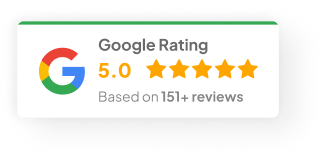16 Oct 25
How to Choose the Right Web Design and Development Partner for Your Business
Your website is the first impression most people will ever have of your brand. If it looks dated or clunky, visitors bounce. If it feels smooth and trustworthy, they stick around. The numbers back it up too: about 88% of users don’t return after a bad online experience. That’s a lot of missed opportunities.
So, when it’s time to pick the right web design and development partner, it’s not just about who can make things “look good.” It’s about finding people who get your business, know how to turn clicks into customers, and actually give a damn about results.
Here’s what matters most.
1) Start With Your End Goal
Before you talk to anyone, know what you’re after.
Different goals lead to different design decisions.
Are you trying to:
- Launch a brand-new site from scratch?
- Rebuild something outdated?
- Push for more leads or e-commerce sales?
A team that knows your “why” can figure out the “how.”
For instance, an online store might need fast-loading product pages and simple checkout flows, while a service business probably needs solid lead capture and SEO baked in.
A pretty website is fine. But a purposeful one — that’s what brings results.
2) Dig Into Their Work
Every good agency leaves a trail. Go check it.
Look through their projects, not just the flashy homepage shots. Open the sites. Click around. Ask yourself — does it feel right? Is it fast? Clear? Does it guide you naturally where you need to go?
Ask them for results, not just pictures. Maybe one of their redesigns cut bounce rates by half, or a client’s traffic doubled. Those stories tell you far more than design jargon ever could.
That’s the kind of proof you want.
3) Don’t Get Blinded by the Pretty Stuff
A mistake a lot of businesses make — choosing a team just because they design well. And yeah, visuals are important, but they’re not everything.
Good design is about how it works, not just how it looks. Stanford found that 75% of people judge a brand’s credibility based on its website design, which means your site needs to feel trustworthy and intuitive from the start.
A smart agency will think beyond color palettes. They’ll talk about:
- User experience and navigation flow
- Clear calls-to-action
- Messaging that builds trust
- Small, data-backed tweaks that actually lift conversions
Because that’s what turns visitors into leads.
4) Make Sure They Can Actually Build
There’s a big difference between a “designer” and a “developer.” You need both.
Your web partner should handle the technical side like pros:
- Responsive design, so it looks great on any device
- SEO structure, so search engines don’t ignore you
- Speed optimization, because Google says 53% of mobile users ditch sites that take longer than 3 seconds to load
- Security and maintenance, so you’re not waking up to a hacked homepage one day
The build is where everything either holds together or falls apart. You don’t want surprises later.
5) See How They Communicate
This one’s underrated. The best agency in the world is useless if they’re terrible at communication.
Ask how they run things:
- Do they check in weekly or just disappear until launch?
- Will you have a single point of contact?
- How do they handle revisions?
If their answers sound vague, that’s a red flag. A professional team will walk you through each phase, explain what’s happening, and be upfront about timelines.
You want a partner who treats your project like a collaboration — not a transaction.
6) Ask About SEO and Tracking
If your web partner doesn’t talk about SEO from day one, that’s a bad sign. Good design means nothing if no one finds you.
They should build with:
- Clean URL structures
- Optimized metadata
- Proper heading hierarchy
- Fast-loading pages
And after launch, analytics should be part of the deal. According to McKinsey, companies that use data-driven design are 23 times more likely to gain customers and 19 times more likely to be profitable.
Data tells you what’s working and where to improve.
7) Think Long-Term
Websites aren’t “done” after launch. They’re living things.
They need care — updates, backups, security patches, fresh content. Ask if your agency offers post-launch support.
Do they:
- Provide regular updates?
- Handle performance checks?
- Offer training for your team?
If they vanish after handing over the site, you’ll be on your own when something breaks. A good partner sticks around.
8) Experience and Reputation Count
You can tell a lot by how long a company’s been around. If they’ve lasted years in this industry, it means they’ve adapted, learned, and kept clients happy.
Check:
- Client reviews
- Longevity in the field
- Range of industries they’ve worked with
That consistency says more than any pitch deck ever could.
And this is where Chromatix stands out. The team’s been doing this for years, crafting WordPress websites that not only look sharp but convert consistently. They blend creativity with clear strategy, every page built to move users closer to your goals.
That’s the kind of focus you want behind your brand.
9) Don’t Let Price Be the Decider
Budget matters (of course it does). But cheap usually comes with a catch: buggy builds, poor UX, zero support. And fixing a bad site later costs a lot more than getting it right the first time.
Forrester Research found that great UI can lift conversions by 200%, and smart UX can push that to 400%. Those numbers speak for themselves.
So don’t just compare price tags. Compare value. Look for skill, reliability, and proof that they deliver.
Bottom Line
Choosing the right web design and development partner can make or break your online presence. You need people who understand strategy, not just design — who care about performance, conversions, and growth.
At Chromatix, that’s the focus: building WordPress sites that work hard, look beautiful, and convert. It’s a mix of design, data, and real-world know-how.
Your website should be your best salesperson; not just a digital brochure.


